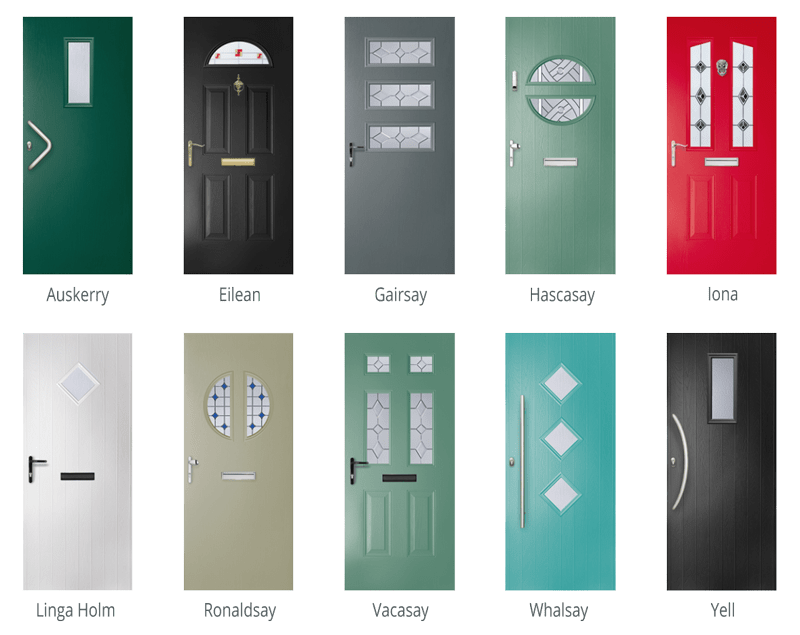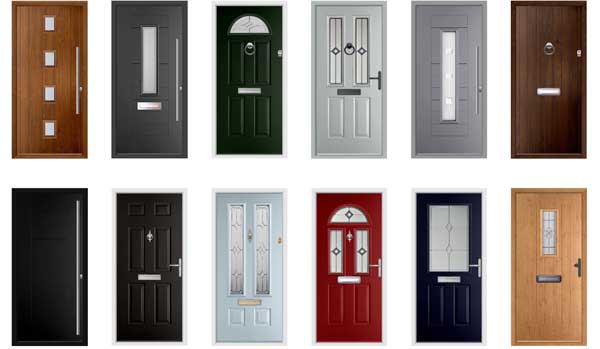How to choose the Ideal Patio door for your home.
How to choose the Ideal Patio door for your home? Enjoy your home even more by adding more natural light and improving your access to your outdoor living areas by
Mon-Friday 08:00-17:00,
Sat 10:00- 16:00, Sun Appointment Only
STANDARD DOOR SIZES UK WIDTH, HEIGHT, AND MINIMUM SIZE BY TYPE
There are many different standard door sizes available in the UK and understanding the measurements can often become quite confusing. Daylight Glazing offers a core selection of the most common door size uk from stock and if you have a non-standard size requirement, bespoke sizes can be ordered for many of our door ranges.
The standard door sizes in the UK are a little different than they are other parts of the world. In this blog post, we will talk about what the standard width and height of internal and external doors is for homes in the UK, as well as what size front door you should have on your home.
The most common Standard door size in UK is 2’6” (1981 x 762 x 35mm).


When considering door sizes, it’s essential to understand the standards to ensure compatibility and functionality. Standard door heights UK typically range from 80 inches (6 feet 8 inches) to 96 inches (8 feet), while standard door widths vary between 24 inches to 36 inches. External doors, often serving as entry points to buildings, may have larger dimensions, such as 80 inches in height and 36 inches in width. A door size guide can assist in selecting the appropriate dimensions for different spaces and requirements. Double doors, consisting of two panels hinged together, provide a wider opening and are commonly used for grand entrances or interior spaces requiring a more expansive access point. External door sizes may vary depending on the specific architectural design and requirements of the building. Fire door sizes adhere to strict regulations for safety, typically featuring standard heights and widths suitable for various applications.
Common door frame widths ensure proper installation and support for doors, with standard dimensions accommodating different wall thicknesses. Garage doors, whether for residential or commercial use, come in standard uk front door size uk to fit standard garage openings, ensuring seamless installation and operation. Interior door sizes, including internal door height and standard door heights uk and width, cater to the specific dimensions of rooms within a building, promoting efficient traffic flow and spatial functionality. Internal door frames are designed to match these dimensions, providing structural support and aesthetic cohesion within interiors. Overall, understanding these standard door dimensions uk is crucial for effective construction, renovation, and interior design projects
All of the standard UK and metric door sizes are usually available as a fire door equivalent with the only difference being an increased door thickness of 45mm. This is because extra core component materials are required in the construction of the door to achieve its’ fire rating. Remember to check that your frames, in tumescent seals and iron mongery also comply with the door’s fire certification.
Please see below our helpful door size conversion chart. If you still work in feet and inches, the chart will help you work out the metric equivalent size of our doors.

The ‘non-standard UK door sizes’ below are the available but less commonly wanted door sizes in the UK. These door dimensions are readily available in popular ranges of doors. If your door isn’t on this list it’s worth giving us a call to see what we can do, even if that means we recommend custom doors to suit you best.

Metric standard door sizes typically range from 1981mm (6 feet 6 inches) to 2040mm (6 feet 8 inches) in height and 762mm (2 feet 6 inches) to 926mm (2 feet 10 inches) in width for internal doors. Standard Uk External door sizes commonly have dimensions of around 1981mm (6 feet 6 inches) to 2032mm (6 feet 8 inches) in height and 813mm (2 feet 8 inches) to 914mm (3 feet) in width.
When it comes to standard door sizes – measuring is key! If you’re out shopping for new interior or exterior doors then make sure you take dimensions into account before making your purchase. It’s advisable that these measurements are checked by a professional door installer beforehand too, just in case there are any issues which need sorting out early on rather than having problems further down the line!
Where you can play with our design tool and get the best idea for your doors and windows with style, color and many more options.
You can always call us on 020 8386 1545 or email us at info@daylightglazing.co.uk.
Let us know if you liked the post. That’s the only way we can improve.
Get a quote for your Double glazing needs
Feel free to contact us anytime!! We are here to help you.
How to choose the Ideal Patio door for your home? Enjoy your home even more by adding more natural light and improving your access to your outdoor living areas by
Skylight Windows vs. Roof Windows: Choosing the Right Option for Your Home When it comes to the installation of skylight windows vs. roof windows we always wonder which one should
What is UPVC ? A complete Guide of UPVC Doors and Windows by Daylight Glazing! When buying a new door or window or replacement of doors and windows it is
Can you Paint UPVC Doors and Windows? A Complete Guide to Painting UPVC UPVC is widely used for doors and windows due to its durability, low maintenance, and cost-effectiveness. But
How Much Does it Cost to Build a Conservatory in London and Surrounding Areas? Are you thinking about adding a greenhouse to your home in Barnet, Borehamwood, Ashford, Staines, London,
The Ultimate Guide to Cleaning Aluminium Windows and Doors Aluminium windows and doors offer durability, style, and energy efficiency, making them a popular choice for modern homes and buildings. However,
The pros of windows with blinds built inside the glass are usually cleaner, safer for your home, and less frustrating than regular blinds. Here are some of the top reasons people have integral blind windows installed in their home.
Integral blinds are blinds that are fitted between the panes of glass that make up a double or triple glazed unit. Despite being in between the panes of glass, the blinds can be opened and closed manually or by an electronic operation.
One of the most common questions asked is how much integral blinds cost. There are several ways to get an approximate price for windows, doors or bi-folding doors, but when it comes to finding out prices for integral blinds, it is a little more difficult.
Standard door sizes in the UK typically range from 1981mm (6 feet 6 inches) to 2040mm (6 feet 8 inches) in height and 762mm (2 feet 6 inches) to 838mm (2 feet 9 inches) in width for internal doors. External doors commonly have dimensions of around 1981mm (6 feet 6 inches) to 2032mm (6 feet 8 inches) in height and 813mm (2 feet 8 inches) to 914mm (3 feet) in width.
The standard door height of an internal door in the UK is typically 1981mm (6 feet 6 inches).
A UK standard internal door frame typically has a width of around 75mm (3 inches) to 100mm (4 inches).
To measure for a double door, measure the width of the opening and divide it by 2. This will give you the width for each door panel. Then measure the height of the opening to determine the required height for the double doors.
The average size of a front door typically ranges from 80 inches (6 feet 8 inches) to 84 inches (7 feet) in height and 36 inches (3 feet) in width.
